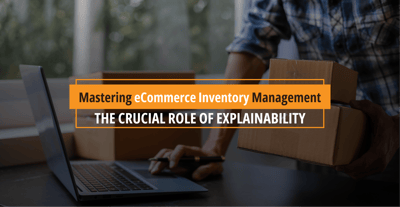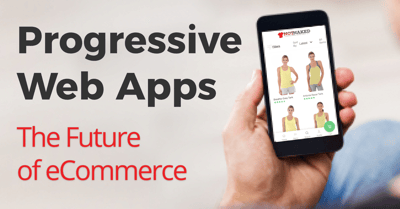Headquarters
175 S Main St Suite 1310,
Salt Lake City, UT 84111

Magento is a big name in the retail technology business, widely known as one of the most popular, legacy open-source platforms. However, since all versions of Magento 1 will become end of life (EOL) beginning in July of this year, many retailers are considering either migrating to Magento 2 or a new platform altogether. In this blog, we help you determine whether Magento 2 is a good fit for your business and introduce you to alternative solutions.
Magento 2 is undoubtedly a good choice for retailers that want a flexible platform to manage multiple product types, attributes, and complex features, and want their team to maintain control over the platform roadmap and maintenance. Magento is an open platform that enables retailers to customize their system to satisfy the unique needs of their specific industry.
As a result, users either have an in-house development team or work with a third-party development agency that manages upgrades, security issues, servers, bugs, and new features. If this is a business requirement for you, and you don’t mind the hefty price tag associated with this solution, you’re probably thrilled by the thought of migrating to Magento 2. However, before you make this pivotal transition, it’s important to note the system’s shortcomings. We list these shortcomings below, drawing on the real-life experiences of Magento clients.
Magento 2 is a legacy product. Why? Because it relies on a monolithic architecture that does not support API-first Headless Commerce natively, which is needed to create a seamless digital experience across multiple channels and touchpoints. Headless Commerce has been one of the most common buzzwords in the retail industry recently, but what does it mean? As the name would suggest, it means that the website's presentation layer (UI) is decoupled from its back-end, which allows brands more flexibility and control over buying experiences.
The world is moving to an API-first approach to eCommerce, meaning your organization should seriously consider migrating to a Headless Commerce solution that supports a cohesive, omnichannel shopping experience. Retailers that are currently retrofitting Magento 2 as a Headless Commerce solution were required to make additional investments and spend additional development hours to alter the platform’s monolithic architecture, and were still not able to achieve all of the benefits of a native Headless Commerce solution.
Magento 2 promised better performance and scalability than its predecessor, but it’s not as easy as it seems. It is an incredibly time-consuming process for developers to optimize your site speed because of the system’s complexity. To make matters worse, if you have a large number of SKUs, Magento’s out-of-the-box solution does not scale up, meaning you will need to invest additional development hours to scale your platform. As we mentioned previously, Magento 2 comes with a hefty price tag, so you may not be thrilled to find that, despite this high cost, you’ll be required to spend additional capital to ensure the performance and scalability you need.
Retailers have cancelled their migration to Magento 2 after realising that the system has over 1,300 open bugs. It’s no question that this platform will require significant input from your development team to stay on top of performance issues and avoid your site crashing, slowing down, or simply not working as it is intended to. Clients continue to be concerned and dissatisfied with the maintenance costs that increase the total cost of ownership of this solution.
In conclusion, if customization and code ownership are important to you, and if you are not concerned by the high total cost of ownership of the platform, then Magento 2 is likely a great fit for your team. However, if you’re looking for a more cost-effective alternative, and if you do not want to strain your internal IT team with the management and maintenance of the Magento platform, a SaaS platform is probably a better option for your business.
Our experts at HotWax Commerce have analyzed re-platforming data from Magento to other SAAS platforms using BuiltWith, a top web technology profiler tool. Our analysis showed that young, primarily eCommerce businesses migrated to Shopify and BigCommerce. Meanwhile, midsize and enterprise retailers migrated primarily to Shopify Plus and Salesforce Commerce. There are countless blogs and articles across the web that compare Shopify Vs BigCommerce and Shopify Plus Vs SalesForce Commerce, so we won’t add to the noise. However, we would like to raise some important questions for you to consider as you choose your next eCommerce platform.
1. Is the mobile traffic of your eCommerce website higher than 50%, and are you expecting it to grow to up to 80% in the coming years?
2. Is your mobile site’s page load time less than a second?
3. Do you have brick and mortar stores? If so, would you like to unify your online and brick and mortar stores to implement omnichannel strategies like Buy Online Pick-Up In Store, Ship-From-Store, and Endless Aisle?
If the majority of your website traffic is coming from desktop, you’re not concerned with your mobile site speed, and you’re not interested in offering omnichannel experiences to your customers, platforms like Shopify, BigCommerce, and SalesForce Commerce may be your perfect match. However, we’ve found that many mid to enterprise retailers are looking for more out of their technology.
If your mobile traffic is expected to grow to 80% of total website traffic, and if your page load time on mobile is longer than 1 second, you are losing sales. That’s a big statement, we know, but the data is conclusive. Bounce rate is directly related to page load time. As load time increases from 1 to 4 seconds, bounce rate increases up to 90%, which negatively impacts eCommerce conversion rates.
To achieve a high-speed, mobile-first website, forward-thinking retailers are adopting Progressive Web Apps (a technology launched by Google to combat lackluster mobile experiences). If you’re looking to follow in their footsteps, you need an API-first, Headless Commerce platform instead of a legacy solution like Magento, BigCommerce, and Shopify. Most of these platforms were designed in the late 2000s, when smartphones had just hit the streets and retailers weren’t yet optimizing their platforms for mobile and social media. All of these solutions would require additional development hours to create an API layer for PWA.
If your brand has multiple brick & mortar locations, and if you are looking to offer omnichannel experiences like Buy Online Pick-Up In-Store, Ship-from-Store, and Endless Aisle, to your customers, then you need a Distributed Order Management system (DOM) that integrates with your eCommerce platform. The enterprise version of Magento 2 offers DOM, although it is a multi-tenant solution that is not available in the open-source model. However, Shopify Plus, BigCommerce, and Salesforce Commerce all do not offer Distributed Order Management natively.
Salesforce Commerce has partnerships with DOM providers. Clients that are currently using these platforms must use third-party DOM and have to invest additional development resources, which increases time-to-market and cost of implementation.
In the words of retail innovation strategist Steve Dennis, “because so much of what was useful and important in the past not only doesn’t serve us very well right now but in many cases may even lead us down the completely wrong path.”
Determined to speak directly to the needs of mobile-first, omnichannel retailers, our team designed a next-generation eCommerce platform called HotWax Commerce. HotWax Commerce is the only platform that delivers Digital Commerce, Distributed OMS, and Mobile POS in one unified cloud. As a result, we’ve nicknamed our solution Omnichannel-as-a-Service. Our plug-and-play solutions include ultrafast mobile commerce, click-and-collect, clienteling, endless aisle, in-store mobile checkout, store fulfillment, and more, all without the need for additional development. Some of the benefits of HotWax Commerce include:
Our API-first Headless Commerce architecture not only gives our clients complete creative control over their customer experience based on their immediate needs, but also allows for seamless integration with their existing technology ecosystem, like their ERP, CRM, and WMS. HotWax Commerce is also pre-integrated with ERP solutions like Netsuite and Microsoft Dynamics.
Headless Commerce is pre-integrated with VueStorefront PWA and follows all the UX best practices recommended by Google. This improves user engagement, average session time, and conversion rates on mobile.
Our pricing is based on a fixed fee per order with monthly minimums. This is a preferred model compared to other platforms like Shopify Plus and Salesforce Commerce because these platforms take a percentage of your total revenue. Our metered pricing allows you to keep a higher percentage of your profits while enjoying a wider variety of omnichannel solutions.
HotWax Commerce is tailored specifically to the apparel, footwear, and accessory industries. This specialization allows us to provide you with a cohesive solution that caters to the needs of your customers without requiring additional customization.
Our solution is plug-and-play. What does this mean? Well, since all of our features and functionalities are already built into our solution, both the one-time implementation fee and time-to-market is much lower than our competitors.
Our metered pricing and low implementation fees result in an overall reduction in total cost of ownership.
* * *
If your brand is looking ahead, it simply doesn’t make sense to invest in legacy technology unless you’ve got the budget and development resources to customize the solution to your business needs. In order for your eCommerce platform to deliver a seamless shopping experience across multiple channels and customer touch points, it should be built on a headless, API-first architecture. Request a consultation with the HotWax Commerce team to learn more about our plug-and-play solution as you consider eCommerce vendors.







